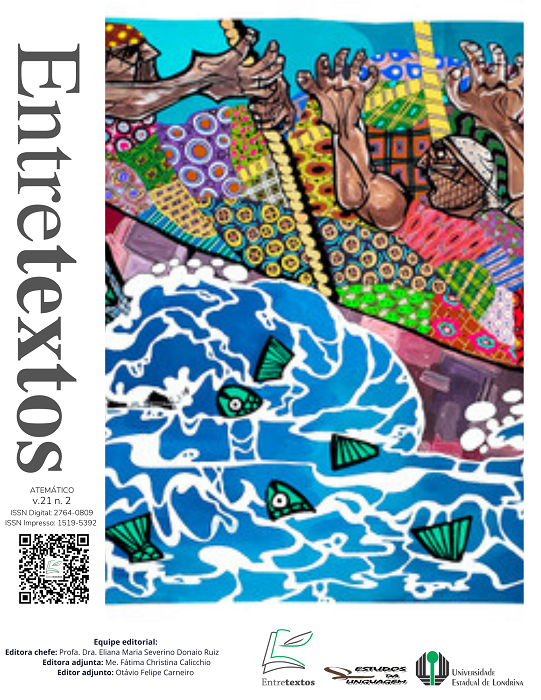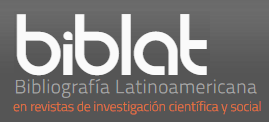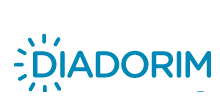Niveles de metáfora conceptual en la Lingüística Cognitiva
DOI:
https://doi.org/10.5433/1519-5392.2021v21n2p63Palabras clave:
Metáfora, Lingüística Cognitiva, EsquematicidadResumen
Este artículo sintetiza y discute propuestas de la Lingüística Cognitiva que proponen la existencia de niveles de metáfora conceptual con el objetivo de mostrar cómo se desarrolla ese tema específico y destacar los avances y los huecos explicativos en la teoría existente. Presento una breve retrospectiva de los niveles de metáfora en las obras de Lakoff y Johnson, Grady, Clausner y Croft y Cameron y, finalmente, el abordaje multinivel de Kövecses. Expresiones metafóricas con el dominio fuente CONSTRUCCIÓN obtenidas de un corpus de discursos de toma de posesión de presidentes brasileños sirven para ejemplificar y fomentar la discusión. Se observa que los niveles de metáfora ya se presuponían en las obras de Lakoff y Jonhson y Grady. Clausner y Croft mostraron esa variación en niveles de esquematicidad y productividad. Cameron propuso una interpretación metateórica de niveles de metáfora. Kövecses planteó que la metáfora conlleva la relación entre estructuras en cuatro niveles conceptuales y sugirió niveles analíticos ontológicos y contextuales. Propongo que la cuestión de las unidades conceptuales y de los niveles analíticos forman parte de la Lingüística Cognitiva desde su principio. Kövecses organizó coherentemente los niveles de metáfora; pero todavía subsisten imprecisiones en la distinción entre frames y dominios.
Descargas
Citas
BARSALOU, L. The human conceptual system. In: SPIVEY, M.; MCRAE, K.; JOANISSE, M. (ed.). The Cambridge Handbook of Psycholinguistics. New York: Cambridge University Press, 2012. p. 239-258.
BYBEE, J. Usage-based theory and exemplar representations of constructions. In: HOFFMANN, T.; TROUSDALE, G. (ed.). The Oxford Handbook of Construction Grammar. Oxford: Oxford University Press, 2013. p. 52-66.
CAMERON, L. Operationalising 'metaphor' for applied linguistic research. In: CAMERON, L.; LOW, G. (ed.). Researching and applying metaphor. Cambridge: Cambridge University Press, 1999. p. 3-28.
CIENKI, A. Frames, idealized cognitive models, and domains. In: GEERAERTS, D.; CUYCKENS, H. (ed.). The Oxford Handbook of Cognitive Linguistics. Oxford: Oxford University Press, 2007. p. 170-187.
CLAUSNER, T.; CROFT, W. Productivity and schematicity in metaphors. Cognitive Science, [s.l.], v. 21, n. 3, p. 247-282, 1997. DOI https://doi.org/10.1207/s15516709cog2103_1 .
COSTA, V. C. A palavra Brasil em discursos de posse presidencial da Nova República: panorama sociocognitivo (1990-2011). 2015. Dissertação (Mestrado em Teoria Literária e Crítica da Cultura) - Universidade Federal de São João del-Rei, São João del-Rei, 2015. DOI https://dx.doi.org/10.13140/RG.2.2.27541.78561 .
COSTA, V. C. A cultura das metáforas e frames de construção em discursos de posse presidencial brasileiros. In: CONGRESSO INTERNACIONAL SOBRE METÁFORA NA LINGUAGEM E NO PENSAMENTO, 6., 2017, Salvador. Anais [...]. Salvador: UFBA, 2017. p. 35.
CROFT, W. Construction Grammar. In: GEERAERTS, D.; CUYCKENS, H. (ed.). The Oxford Handbook of Cognitive Linguistics. Oxford: Oxford University Press, 2007. p. 463-508.
DABROWSKA, Ewa. Cognitive Linguistics' seven deadly sins. Cognitive Linguistics, [s.l.], v. 27, n. 4, p. 479-491, 2016. DOI https://doi.org/10.1515/cog-2016-0059 .
EVANS, V. A Glossary of Cognitive Linguistics. Edinburgh: Edinburgh University Press, 2007.
EVANS, V.; GREEN, M. Cognitive Linguistics: an introduction. Edinburgh: Edinburgh University Press, 2006.
GIBBS JUNIOR, R. Metaphor wars: conceptual metaphors in human life. Cambridge: Cambridge University Press, 2017.
GOLDBERG, A. Constructions: a construction grammar approach to argument structure. Chicago: The University of Chicago Press, 1995.
GOLDBERG, A. Constructions at work: the nature of generalization in language. New York: Oxford University Press, 2006.
GRADY, J. Foundations of meaning: primary metaphors and primary scenes. 1997. 299 f. Tese (Doctor of Philosophy in Linguistics) - Graduate Division of the University of California, Berkeley, 1997a. Disponível em: https://escholarship.org/uc/item/3g9427m2. Acesso em: nov. 2020.
GRADY, J. THEORIES ARE BUILDINGS revisited. Cognitive Linguistics, [s.l.], v. 8, n. 4, p. 267-290, 1997b. DOI https://doi.org/10.1515/cogl.1997.8.4.267 .
GRADY, J. Metaphor. In: GEERAERTS, D.; CUYCKENS, H. (ed.). The Oxford Handbook of Cognitive Linguistics. Oxford: Oxford University Press, 2007. p. 188-213.
KÖVECSES, Z. Metaphor: a practical introduction. 2nd ed. Oxford: Oxford University Press, 2010.
KÖVECSES, Z. Where metaphors come from: reconsidering context in metaphor. Oxford: Oxford University Press, 2015.
KÖVECSES, Z. Levels of metaphor. Cognitive Linguistics, [s.l.], v. 28, n. 2, p. 321-347, 2017. DOI https://doi.org/10.1515/cog-2016-0052.
KÖVECSES, Z. Extended Conceptual Metaphor Theory. Cambridge: Cambridge University Press, 2020.
LAKOFF, G.; JOHNSON, M. Metaphors we live by. Chicago: The University of Chicago Press, 1980a.
LAKOFF, G.; JOHNSON, M. The metaphorical structure of the human conceptual system. Cognitive Science, [s.l.], v. 4, n. 2, p. 195-208, 1980b. DOI https://doi.org/10.1016/S0364-0213(80)80017-6 .
LIMA, P. About primary metaphors. DELTA, São Paulo, v. 2, n. esp., p. 109-122, 2006. DOI http://dx.doi.org/10.1590/S0102-44502006000300009 .
MACARTHUR, F. et al. (ed.). Metaphor in use: context, culture and communication. Amsterdam: John Benjamins, 2012.
STEEN, G. Finding metaphor in grammar and usage: a methodological analysis of theory and research. Amsterdam: John Benjamins, 2007.
YU, N. Metaphor from body and culture. In: GIBBS JR, R. (ed.). The Cambridge Handbook of Metaphor and Thought. Cambridge: Cambridge University Press, 2008. p. 247-261.
Descargas
Publicado
Cómo citar
Número
Sección
Licencia
Derechos de autor 2021 Entretextos

Esta obra está bajo una licencia internacional Creative Commons Atribución 4.0.
Entretextos adota a Licença Creative Commons Attribution 4.0 International, portanto, os direitos autorais relativos aos artigos publicados são do/s autor/es.
Sob essa licença é possível: Compartilhar - copiar e redistribuir o material em qualquer suporte ou formato. Adaptar - remixar, transformar, e criar a partir do material, atribuindo o devido crédito e prover um link para a licença e indicar se mudanças foram feitas.
























